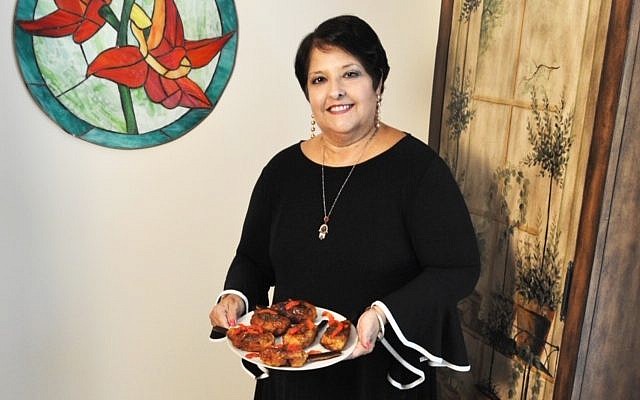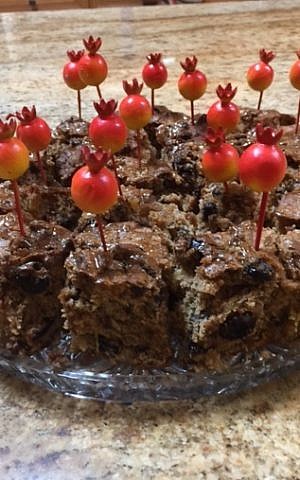The opinions expressed on this webpage represent those of the individual authors and, unless clearly labeled as such, do not represent the opinions or policies of TBS.
Cache of Crypto-Jewish recipes dating to Inquisition found in Miami kitchen
New cookbook features unique kosher dishes unwittingly prepared by generations of a Catholic Cuban-Spanish family with hidden Sephardic Jewish roots
By Renee Ghert-Zand 27 September 2019
Chuletas, a unique Crypto-Jewish presentation for a French toast creation. This is a sweet dairy recipe that turns bread and milk into a “pork chop.” (Courtesy of Genie Milgrom)
A few years ago, Genie Milgrom came across a treasure trove of old recipes stashed away in her elderly mother’s kitchen drawers. There were hundreds of them — some in tattered notebooks, others scribbled on crumbling scraps of paper.
Upon closer examination, it became apparent to Milgrom that these were the handwritten notations of generations of women in her family. The recipes had traveled as an intact, ever-growing collection from Spain to Portugal to Cuba to the United States, reflecting not only the lives of Milgrom’s ancestors, but also the hidden heritage they had for the most part unknowingly safeguarded since the time of the Spanish Inquisition.
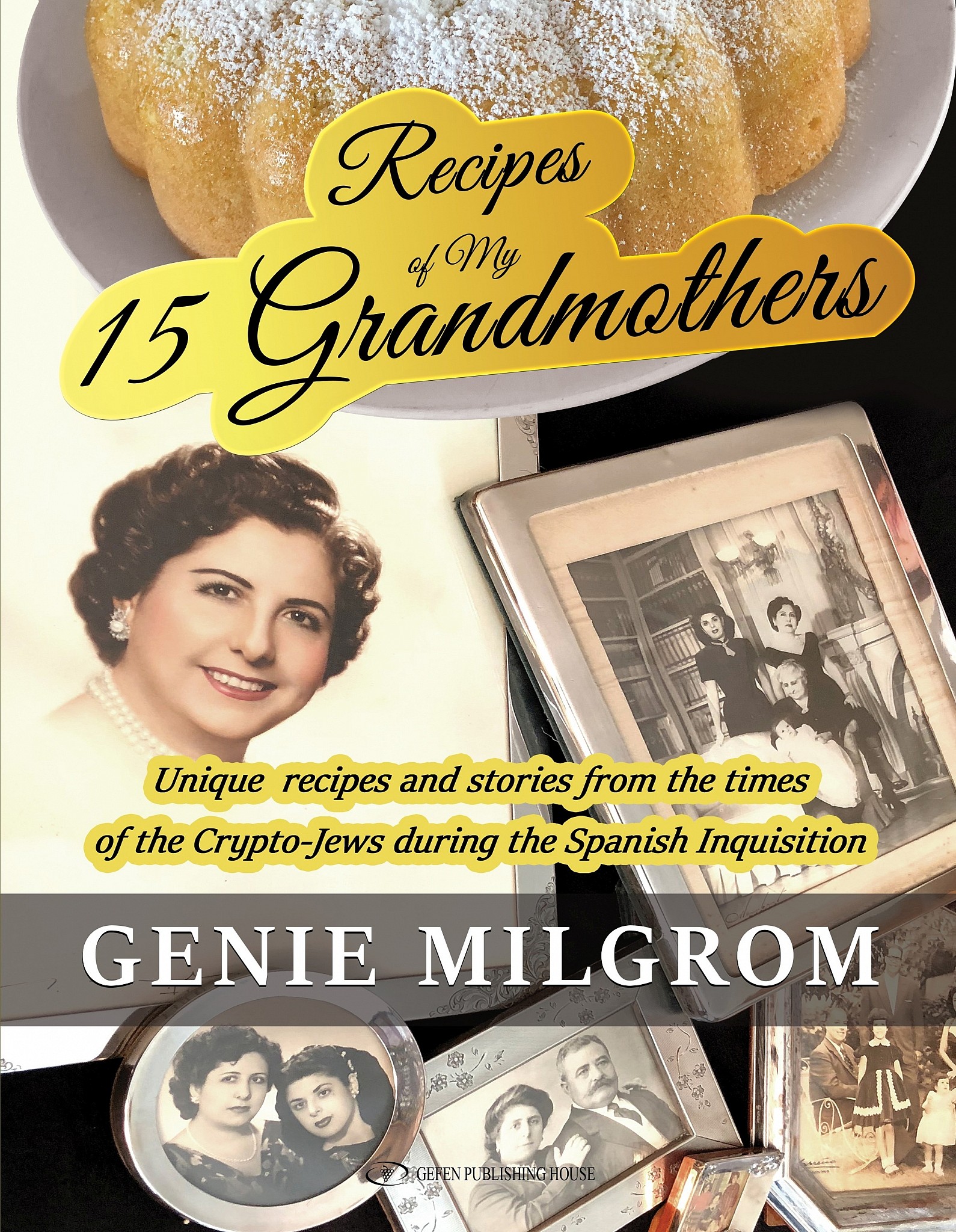
‘Recipes of My 15 Grandmothers’ by Genie Milgrom (Gefen Publishing House)
Milgrom, who grew up devoutly Roman Catholic in Havana and Miami, has Crypto-Jewish roots. Her ancestors were Jews who practiced Judaism in secret while outwardly living as Christians to avoid being expelled, tortured, or killed by the Church. They were Crypto-Jews until the late 17th century, and lived as Catholics from then on. Through a decade-long, intense genealogical search, Milgrom discovered that she has an unbroken Jewish maternal lineage going back 22 generations to 1405 pre-Inquisition Spain and Portugal.
Get The Times of Israel’s Daily Edition by email and never miss our top stories Free Sign Up
Her new kosher cookbook, “Recipes of My 15 Grandmothers: Unique Recipes and Stories from the Times of the Crypto-Jews during the Spanish Inquisition,” is a tribute to those female relatives who repressed or forgot their Jewish identity over hundreds of years, but managed to preserve vestiges of it through their food.
As a girl, Milgrom didn’t think to question the idiosyncratic customs her mother and grandmothers practiced in the kitchen.
Recipes didn’t mix milk and meat, eggs were always cracked into a separate bowl and inspected for blood before use, and rice and leafy green vegetables were washed carefully and checked for insects. Curiously, some recipes called for potato or corn starch instead of wheat flour. And perhaps most unusually, Milgrom was instructed by her Spanish-born grandmother that when preparing a large batch of dough, one had to always pull off a small piece, wrap it in foil, and throw it the back of the oven to burn.

Some of the hundreds of pages of recipes passed down through the generations of Genie Milgrom’s Crypto-Jewish family. (Courtesy of Genie Milgrom)
“She told me it was for good luck,” Milgrom, 64, told The Times of Israel during a recent interview at a Jerusalem hotel.
When Milgrom was in her 30s, as a young divorcee she felt drawn to Judaism and she converted to Modern Orthodox Judaism. She married a Jewish man and then discovered she might have Crypto-Jewish heritage. She realized that her family’s unique culinary habits were actually related to kashrut — the Jewish dietary laws — and other commandments surrounding food preparation. For instance, tearing off a bit of dough and burning it is called hafrashat challah (separating challah), a Jewish religious commandment stemming from a biblical sacrifice.
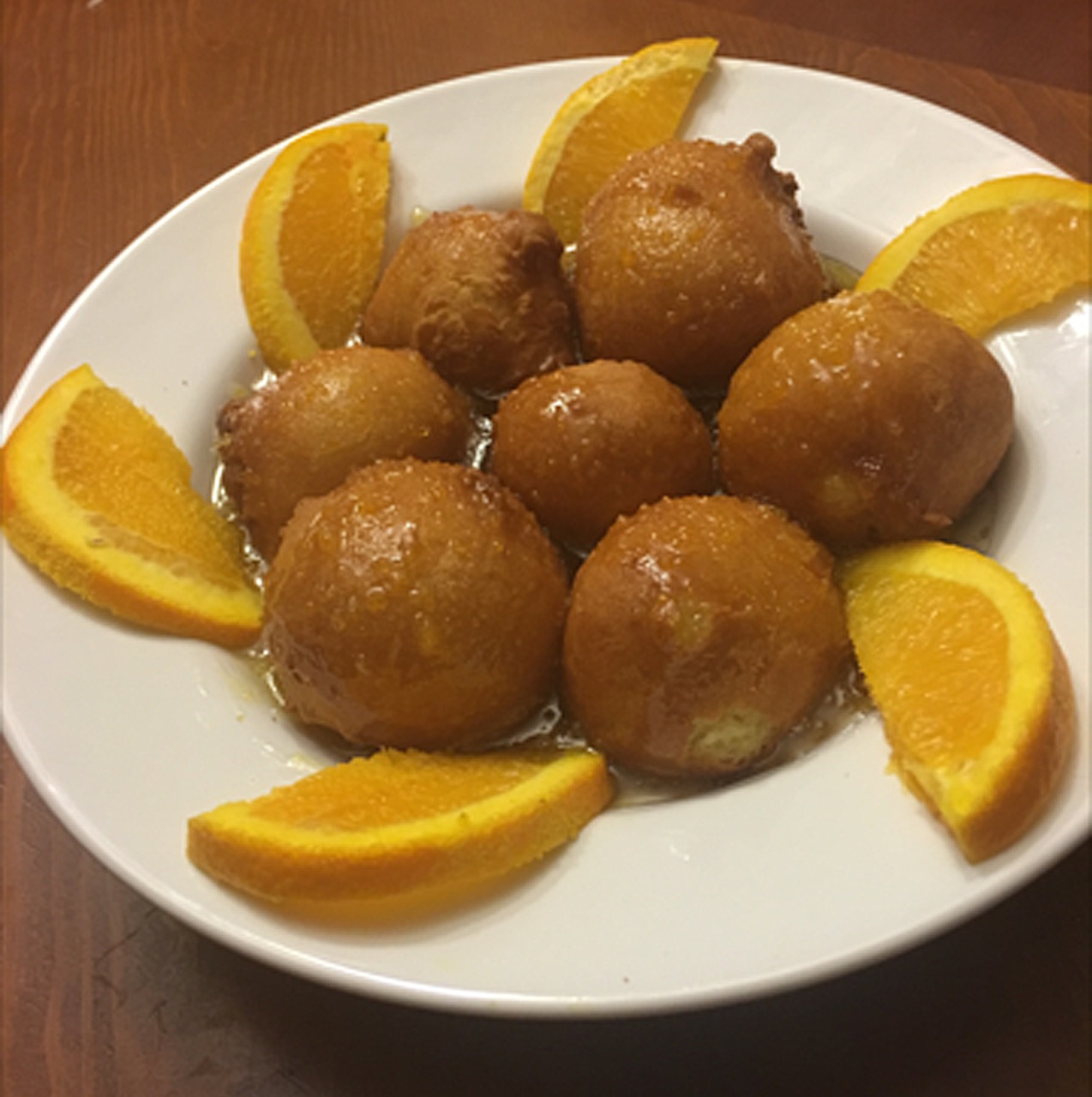
Dulces en Almibar, fried sweets in a sugar syrup. (Courtesy of Genie Milgrom)
“Recipes of My 15 Grandmothers” presents 10 chicken dishes, 8 meat dishes, 3 fish dishes, 6 side dishes, 6 sauces, 42 desserts, and 7 beverages culled from the hundreds of recipes Milgrom found in her mother’s Miami kitchen. All the recipes included are kosher and listed as either meat or dairy, as well as whether they are also kosher for Passover.
Sorting, grouping, cross-referencing and translating the handwritten recipes from Spanish was challenging. But then came the monumental task of testing the recipes and adjusting them for modern and kosher-certified ingredients. For this, Milgrom enlisted some 50 friends, colleagues and family members to help. These included rediscovered long-lost cousins in Fermoselle, the village in western Spain to which Milgrom has traced her maternal lineage. These relatives are still making some of the same dishes Milgrom inherited from her grandmothers.
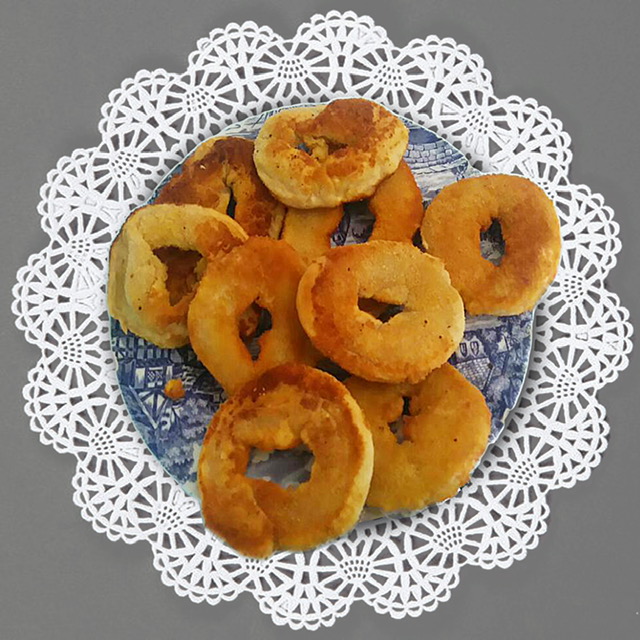
Rosquillas Dora, a dessert similar to a cinnamon and sugar donut. The recipe is from Milgrom’s paternal grandmother, who was born in Costa Rica. (Courtesy of Genie Milgrom)
Measurements proved to be a considerable challenge for many of the recipes. Archaic and colloquial formulations called for such things as: “an egg-full of oil,” “a glass-full of water,” “a tablespoon of egg,” “a little bit of sugar,” and “as much flour as it will hold.”
“One measurement was ‘a small woman’s hand of flour.’ It’s a good thing I have really small hands,” Milgrom joked.
One of the biggest complaints of the testers was that the dishes came out too eggy when using the number of eggs listed in the original recipes. “Clearly their eggs were smaller than the ones we have today.” Milgrom surmised.
Almost all the recipes reflect the agricultural environment of Fermoselle, which sits close to the border with Portugal and is not far from the cities of Zamora and Salamanca. Almonds, olive oil, garlic and anis (liquor) appear as ingredients throughout the cookbook.
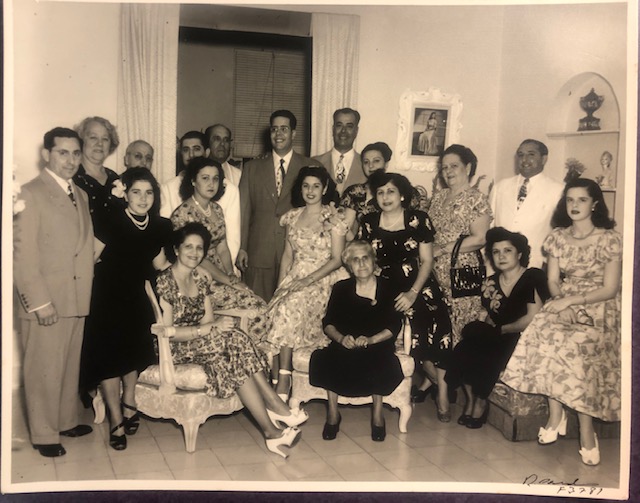
Genie Milgrom’s family (the Ramoses and Medinas) in Havana, Cuba in the 1940’s. This was prior to the Cuban Revolution and their emigration to the US. (Courtesy of Genie Milgrom)
At the same time, the recipes convey the journeys Milgrom’s ancestors took from Spain to the New World. Her mother’s side migrated from Spain to Portugal to Cuba. Milgrom’s father’s side moved from Spain to the Canary Islands to Colombia to Costa Rica, with only several family members eventually continuing on to Cuba. When she was four, Milgrom fled Cuba to the US with her family following the Cuban Revolution.
Once the family arrived in the tropics, new ingredients started appearing as either additions or replacements for ingredients that had been used in Spain. The anis that had flavored so many desserts (especially the Almibar sugar syrup for drizzling on sweets) was replaced with rum. Snapper took the place of cod. Avocado and turbinado sugar started popping up in recipes, and plain beet salad became beet and orange salad.
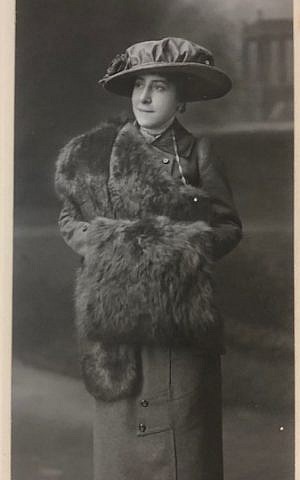
Genie Milgrom’s great-aunt Tia Paulita, who was born in Spain in the 1880’s. It is thanks to her that many of the recipes were written down, collected, and passed down. (Courtesy of Genie Milgrom)
The family’s immigration to Cuba at the turn of the 20th century heralded the inclusion of pork. Before that time, the “other” white meat was conspicuously absent from the recipes handed down from generation to generation. However, one dish that was among the oil-stained pages found by Milgrom indicated that her Crypto-Jewish ancestors took pains to make it appear as though they were eating pork while still in Spain.
Milgrom’s great-aunt Tia Paulita was born in the 1880s, never married and remained in Spain. She kept alive a highly unusual recipe that had been passed down through the generations. It was finally written down by the family on the day she died in Madrid in 1936. The recipe is for Chuletas, a unique Crypto-Jewish presentation for a French toast creation that combines milk and bread to look like a pork chop. Chuleta is Spanish for “pork chop,” but this faux version is really sugary-sweet treat.
“[Chuletas] would have fended off those trying to catch the new converts to Christianity who were hauled off to an Inquisition prison for not eating pork. This is the best look-alike to a pork chop that I have ever seen,” Milgrom wrote.
Those hoping for beautiful color photographs of these unique dishes will be disappointed. Although the lack of images in “Recipes of My 15 Grandmothers” is regretful, it is offset by the heartwarming and informative narratives Milgrom provides for each recipe. She writes about the history of each dish, as well as the challenges faced by her volunteer test cooks and bakers in trying to perfect them.
The author of four books (each published in both English and Spanish) and a lecturer and educator, Milgrom lives in Miami but travels widely for her latest initiative: The Converso Genealogy Project. It is a joint venture with Israel-based online genealogy platform MyHeritage aimed at digitizing all the extant Inquisition records worldwide.
The busy Milgrom is also finishing up work on a new kosher Cuban cookbook, titled “Salsa,” which she believes is the first of its kind.
In the meantime, she is contemplating how to best preserve the original, fragile recipe pages with her many grandmothers’ handwriting. They are special documents, which differ from the kind she has generally encountered in researching her family’s past. In these, the women — and not the men — are front and center.
“When I make this food and smell the aromas that I know they also smelled, it connects me so strongly with the grandmothers,” said Milgrom. “Knowing that I’m eating what they ate brings me closer to my heritage.”
The following is a Rosh Hashana dessert from Milgrom’s new book, “Recipes of My 15 Grandmothers.”
Dark Fruit Cake
Type: Dessert
Level: Difficult
Kosher: Pareve/Milk
I waited until the day before Rosh Hashanah to make this recipe myself as I felt that with all the dark rich fruits and honey it was the perfect one for the New Year Holiday and I was right! I was rushed because there was so much cooking to do but it was worth it once I got this cake into the oven! In my whole life I have never had my house full of the most amazing and spicy aromatic scents! The cake itself is rich but not overpowering and I drizzled dark honey all over. A keeper for the holidays for sure! I have already included my modifications in the recipe below. Enjoy!
½ cup margarine or butter
1 cup turbinado sugar
3 large eggs separated
¼ cup dark honey
2 cups of flour
2 teaspoons cinnamon
2 teaspoons all spice
½ teaspoon nutmeg
½ teaspoon clove powder
1 cup of dark raisins
¼ cup grape juice
½ teaspoon baking soda
1 Tablespoon hot water
1 ½ pounds of dried fruit cut up small. Apricots, figs, cherries, dates and other fruits may be used. I did not use candied fruit as I felt it might be too sweet so I used dried fruit instead
Mix together and sift the flour, allspice, cinnamon, nutmeg and clove powder three times. Beat the sugar and butter/margarine together making sure it is creamy. Beat the egg yolks together with the sugar and add the honey. Whip the egg whites separately. Mix the egg yolk mixture and egg whites together with the sugar and butter/margarine mixture. Add 1 ¾ cup flour slowly until well mixed. Toss the cut-up fruits in the remaining ¼ cup flour and add to the mixture. Add the grape juice. Dissolve the baking soda in the hot water and add to the mixture. Grease a large 9 x 11 rectangular glass mold and cover the bottom with greased parchment paper. Put mixture into the mold and bake at 300 degrees for 1 ¼ hours, Check often. Drizzle dark honey over the top with a little bit of liquor if desired.


